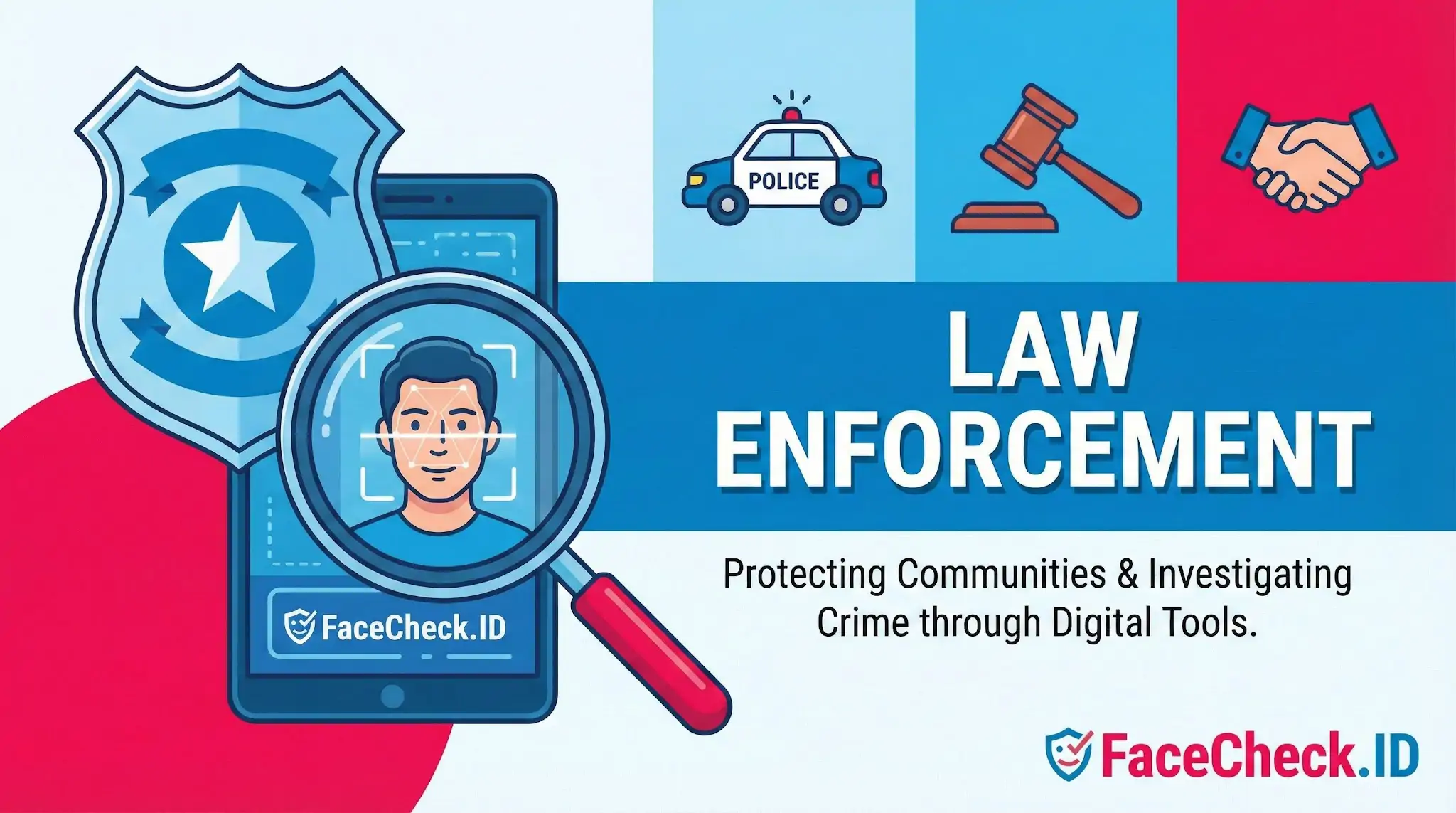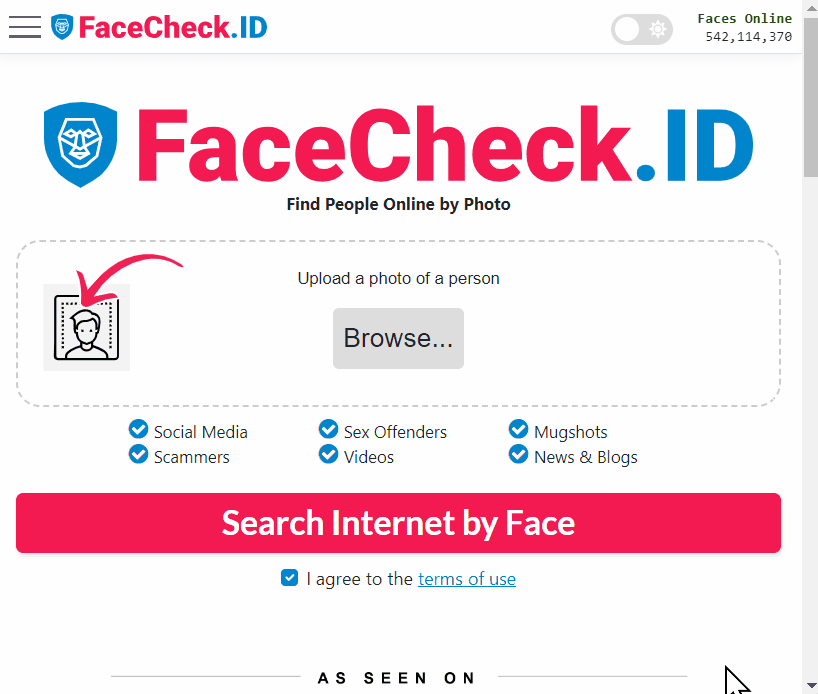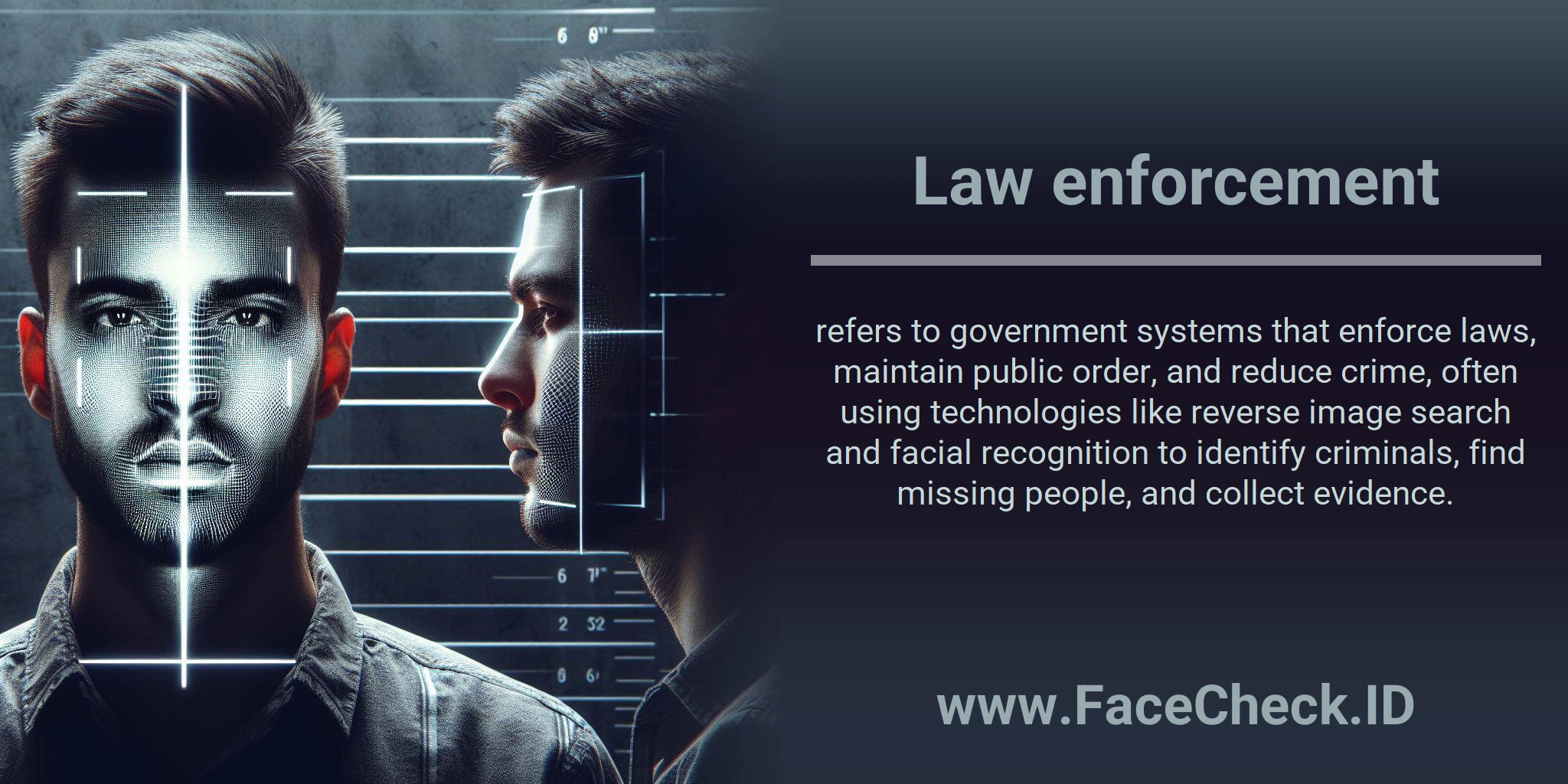Law Enforcement Explained: Roles & Investigations

Law enforcement refers to the government agencies, systems, and professionals responsible for enforcing laws, maintaining public order, and preventing and investigating crime. This includes local police, sheriffs, state and federal agencies, and other authorized public safety organizations.
What law enforcement does
Law enforcement typically focuses on:
- Preventing crime through patrols, community programs, and deterrence
- Responding to emergencies and public safety incidents
- Investigating crimes, collecting evidence, and supporting prosecutions
- Protecting people, property, and critical infrastructure
- Enforcing traffic, civil, and criminal laws based on jurisdiction
Law enforcement and image based investigation tools
In the context of reverse image search, social media investigations, and facial recognition search, law enforcement may use digital tools to:
- Identify suspects by comparing photos or faces to known records
- Locate missing persons by matching images across platforms or databases
- Verify identities in cases involving fraud, impersonation, or stalking
- Find and preserve evidence by tracing where an image appeared online
This work often involves comparing images from a crime scene, CCTV footage, or seized devices with images from public sources or authorized databases to find possible matches.
Why this term matters in reverse image search
Many people encounter the term law enforcement when using image search tools because these technologies can support investigations, reporting, and evidence gathering. Understanding how law enforcement uses reverse image search and facial recognition helps clarify why certain images may be analyzed, flagged, or requested during an investigation.
FAQ
What does “Law Enforcement” mean in the context of face recognition search engines?
In this context, “Law Enforcement” refers to police and other government investigative agencies that may use face recognition search engines to generate leads—such as finding online appearances of a face, linking related images, or identifying potential aliases. Results are typically considered investigative pointers, not proof of identity.
How might law enforcement use a face recognition search engine during an investigation?
Common uses include locating additional photos of a person on the open web, discovering reposted or stolen profile images, mapping where and when images appeared online, and triaging tips by connecting faces across different sources. This is usually combined with independent verification (witness statements, official records, device forensics, etc.).
Do face recognition search engine results meet evidentiary standards for law enforcement?
Often they do not, by themselves. Many agencies treat face-search results as leads that must be corroborated because matches can be wrong due to look-alikes, poor image quality, or context errors (mis-captioned posts, reposts, memes). Admissibility and required validation depend on jurisdiction, agency policy, and how the result is documented and verified.
What safeguards should law enforcement apply to reduce false identification when using face search?
Key safeguards include using high-quality probe images, checking multiple candidate matches (not just the top one), confirming with non-face identifiers (tattoos, scars, clothing, metadata, locations), documenting the full workflow, conducting human review by trained personnel, and requiring independent corroboration before any enforcement action. Agencies should also monitor demographic performance and bias risks.
Can tools like FaceCheck.ID be used by law enforcement, and what should be considered?
A tool like FaceCheck.ID may be used to search for face matches across indexed online content, but whether and how law enforcement may use it depends on local laws, procurement rules, and agency policy. Investigators should confirm data-source legality, retention and audit capabilities, allowed-use terms, and ensure results are treated as leads requiring verification—especially when a match could significantly impact someone’s rights.

Recommended Posts Related to law enforcement
-
Leveraging Facial Recognition Technology to Combat Human Trafficking
Facial recognition technology has become an invaluable tool in the fight against human trafficking, aiding law enforcement in identifying both traffickers and their victims who often evade detection by constantly moving and using false identities. Digital forensics tools help law enforcement sift through text messages, emails, and social media interactions, establishing crucial links between traffickers and victims. These advanced tools allow law enforcement agencies to identify traffickers and rescue victims more effectively than ever before.
-
Facial Recognition Resources
While controversy has emerged over how law enforcement authorities use facial recognition, many police officials have argued that the technology helps them to fight crime, and it can also be used to identify missing persons and the victims of human trafficking. Amazon has announced a one-year moratorium on the sale of its facial recognition software to law enforcement agencies. The announcement was a striking change for Amazon, a prominent supplier of facial recognition software to law enforcement.
-
Facial Recognition: Understanding the Basics
Facial recognition technology has a wide range of applications, such as in marketing for delivering personalized advertisements, in law enforcement for identifying suspects and locating missing individuals, and in consumer technology for features like secure device unlocking and user authentication. Is facial recognition accurate enough for law enforcement use? Setting clear rules and safeguards is essential for responsible use in law enforcement.
-
How to Reverse Image Search Mugshots
Promoting Transparency: Media Responsibility, Public Access, and Law Enforcement Accountability. Holding Law Enforcement Accountable. The platform aids in ensuring that law enforcement agencies act transparently by providing an accessible record of mugshots.
-
Unlocking the Power of Facial Recognition Technology: 10 Eye-Opening Facts
Facial recognition can be used for a wide range of applications, including security, law enforcement, marketing, and personal identification. In security and law enforcement, facial recognition technology is often used to identify suspects in criminal investigations, monitor crowds for potential threats, and verify the identities of individuals entering secure facilities. This can have a wide range of applications, from improving customer service to detecting potential threats in security and law enforcement.
-
All About Face Recognition Technology
Face recognition technology can also be helpful in many other areas, including law enforcement, social media, and health care. Law enforcement agencies are increasingly using face recognition technology to identify suspects. Law enforcement agencies can also use face recognition technology to identify individuals who are in custody.
-
How to Search Arrest Records and Mugshots by a Photo of a Person
Mugshots are one of law enforcement's most popular forms of identification. This could be due to new privacy laws or because law enforcement decides they are not an effective form of identification. They will continue to be used by law enforcement and will be available online, but there will not be any significant changes to how they are used or accessed.
-
Can You Reverse Image Search a Face?
Law Enforcement and Facial Recognition. Law enforcement agencies are increasingly using facial recognition to aid investigations and enhance security measures. Yes, many law enforcement agencies around the world utilize facial recognition technology to identify suspects, find missing persons, and enhance security measures.
-
How to Uncover a Romance Scammer Using Just a Picture
If you find a potential match, take note of the case details and any contact information for law enforcement agencies handling the case. International Challenges: Scammers Operating Beyond Local Law Enforcement's Reach. Romance scammers operate from foreign countries, often outside the jurisdiction of local law enforcement agencies.
-
New Search-by-Face Tool for Investigative Journalists
By analyzing images and videos from social media, surveillance footage, or other sources, journalists could help law enforcement agencies track down traffickers and rescue victims.Investigating Protest Movements: Journalists covering protests or civil unrest could use FaceCheck.ID to identify key figures or agitators within the crowd. By analyzing images and videos from social media, surveillance footage, or other sources, journalists could help law enforcement agencies track down those responsible and bring them to justice.Exposing Child Exploitation Networks: Journalists could use FaceCheck.ID to identify individuals involved in child exploitation networks. By analyzing images and videos from drug busts, surveillance footage, or social media, journalists could help law enforcement agencies track down those involved in the drug trade.Uncovering Fraud and Scams: Journalists could use FaceCheck.ID to identify individuals involved in fraudulent activities or scams.
-
Pig Butchering Crypto Scam Exposed: Fake Rich Friend Uses Deepfakes & Stolen Photos to Steal Billions
Global / Other countries: Contact your local law enforcement agency.
-
The 4 Simple Steps To Find Someone Using Face Search Engine
Additionally, a face search engine can be used to find someone who is wanted by the police or other law enforcement agencies.
-
Find & Remove Deepfake Porn of Yourself: Updated 2025 Guide
You will need this when you report the content to websites, platforms, or law enforcement. Consider law enforcement involvement. A police report can also help with takedown requests, since some sites act faster if they know law enforcement is involved.
-
Demystifying Image Search: The Difference Between Reverse Image Search, Visual Search, and Face Recognition Search
Use Case: Face recognition is widely used in security and law enforcement.
-
Celebrity Romance Scams 2026: How Scammers Use AI Deepfakes and Stolen Photos to Steal Millions
Report to FTC (reportfraud.ftc.gov), platforms, and law enforcement.
-
How to Spot a Catfish Online in Under 60 Seconds with FaceCheck.ID
Local law enforcement: File a police report, especially if significant money was lost. Some EU countries have proposed bans on public facial recognition for law enforcement. Law enforcement with cybercrime expertise.
-
LinkedIn Reverse Image Search to Find LinkedIn Profiles by Photo Using Facial Recognition
Law enforcement and private investigators often use reverse image face search technology to find information about people.
-
How to Find an Unknown Person's Name and Details With Just a Picture
If you find a potential match, take note of the case details and any contact information for law enforcement agencies handling the case.
-
Tutorial: Reverse Image Search for Instagram
If there's a legal concern, law enforcement can work with Instagram to obtain specific details.
-
Find Criminals by Face Pic
If you've got footage or images of a kidnapper, FaceCheck.ID can help identify them and bring them to justice.Fugitives: Do you suspect someone might have altered their appearance to evade law enforcement?


